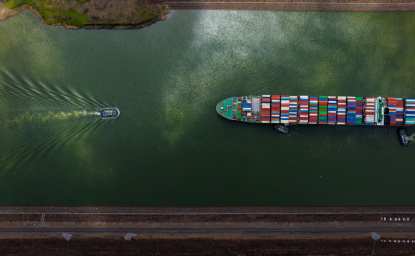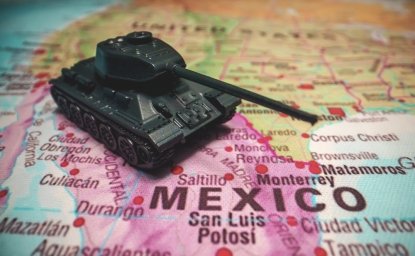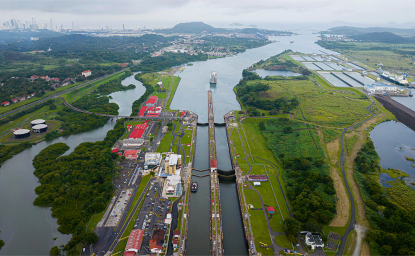Cross-border criminal activity fueled by illegal drugs is causing great damage in both Mexico and the United States. The two governments need to prioritize forging an agreed strategy and action agenda to tackle this serious problem. They should establish a permanent cabinet-level group to oversee bilateral counter-narcotics and cross-border crime cooperation and to monitor progress.
Without enhanced cooperation, tensions can be expected to increase between the two federal governments. The Trump Administration publicly signaled its unhappiness in its August 8 “Memorandum on the Presidential Determination on Major Drug Transit or Major Drug Producing Countries for Fiscal Year 2020.” In the document, the President writes “Without further progress over the coming year, I will consider determining that Mexico has failed demonstrably to uphold its international drug control commitments.” (https://www.whitehouse.gov/presidential-actions/memorandum-presidential-determination-major-drug-transit-major-illicit-drug-producing-countries-fiscal-year-2020/)
Countering Narcotics and cross-border crime are “inter-mestic” issues for both the United States and Mexico: both international and domestic. Sharing an almost 2000-mile border, for example, both countries need effective and improved bilateral cooperation that addresses multiple objectives that are on the domestic and international agendas:
- enhanced border security;
- effective management of the massive legal commerce and transit;
- effective management of irregular migration; and
- reduced cross-border criminal trafficking in drugs, drug proceeds and illicit arms.
Both governments should be open to exploring new policies and tactics that can enhance the overall work against drug use, abuse and trafficking. Improving the basics of law enforcement cooperation is essential, however. Improving the daily collaboration at the border, and beyond, is essential to improving law enforcement and justice work against those who are trafficking in illicit commerce and all the evil effects that flow from those activities in both countries.
In particular, at present, Mexico’s new government needs to give more urgency to strengthening bilateral cooperation to counter the sizable cross-border narcotics flows. They have not yet made this a priority, nor is it clear that they have undertaken a serious evaluation of existing U.S.-Mexico cooperation against illicit drugs and related cross-border crime.
It is understandable that President Andres Manuel Lopez Obrador (AMLO) and his team have been focusing elsewhere in the fight against crime since taking office on December 1 2018. Homicides in Mexico have continued to rise, after years of increases. The numbers appear on track to set a new gruesome record for 2019, topping the record number of homicides set in 2018. Other crime also continues apace. Thus, one can see the logic for AMLO’s government of focusing on establishing a new National Guard to reduce domestic violent crime. It is a massive and complex task.
On top of that domestic Mexican priority, the U.S. Administration demanded that Mexico take action to reverse the increased number of migrants crossing Mexico from Central America to reach the U.S. southern border. To address that U.S. demand, AMLO and his team deployed new National Guard units on key migrant routes and entry points. This tactic has worked so far in reducing the numbers of migrants reaching the U.S. border by some 43% since May. (https://www.hstoday.us/federal-pages/dhs/cbp/july-migration-statistics-show-consistent-decline-from-record-levels-in-may/)
Yet, as of this writing, the United States and Mexico’s new government have not worked out an agreed set of priorities for bilateral cooperation against cross-border drug-trafficking and related crimes.
The criminal organizations, however, continue to traffic massive amounts of heroin, methamphetamines and fentanyl to the U.S. And, there are credible reports of increasing fentanyl production in Mexico, as China is beginning to crack down on such production. (https://www.state.gov/2019-international-narcotics-control-strategy-report/) U.S. officials say they are very concerned with these trends.
And, the flows of illicit drug-sale profits, which could total $19-30 billion a year (https://www.ice.gov/doclib/cornerstone/pdf/cps-study.pdf), and arms (https://www.csmonitor.com/World/Americas/2019/0812/Illegal-border-crossing-How-U.S.-guns-wind-up-in-Canada-and-Mexico) intended for Mexican criminal groups continue to head southward from the U.S.
Mexico and the United States need to put a high priority on developing a common action agenda and an implementation strategy that addresses U.S. objectives to slash drug smuggling across our shared border as well as Mexico’s priorities to reduce homicides and other criminal violence in Mexico as well as corruption. A common agenda needs to encompass funds and arms illicitly flowing to Mexico and reducing demand in the U.S., as well as supply from Mexico.
The agenda and dialogue can include exploring other drug policy models and tactics, as some in Mexico’s government desire, and can incorporate Mexico’s plans to use social and jobs programs and economic development, as well as law enforcement tools, in fighting crime.
For bilateral relations to flourish, however, there must also be sufficient top-level political will from both partners to effectively address drug-related cross-border crime. Those flows are fueling the terrible addiction crisis in the U.S., which has very high costs for addicts, families and those harmed by the associated criminal activities. Simultaneously, the illicit drug sale profits from the U.S. fund and arm criminal organizations that spread chaos, violence and corruption in Mexico.
Day to Day Collaboration
Strong political commitment and an agreed strategy and action plan need to be reflected in effective day to day work, including well-vetted joint task forces tackling priority problem areas.
They need to be accompanied by continued efforts to develop highest quality professional skills and to provide advanced technology and needed resources to those combating transnational criminal groups.
They need to be reflected in improved coordination and communication among and between the many agencies that play key roles on both sides of the border.
Mexico is a significant source and transit country for illegal drugs. Those drugs get to the U.S. border, cross it and then transit to most parts of the U.S. The entire chain of illicit commerce needs to be disrupted, not only at the border but at multiple places along the way. Both production and demand need to be targeted with appropriate policies and programs, as well as hitting the key nodes in between that allow transit and illicit financing to flourish.
Around this action axis, other more innovative policy programs and projects should be explored to improve the counter-narcotics model, but both countries need to work urgently at improving the core of law enforcement, public security and justice cooperation.
At the present, we lack evidence of top-level political will in Mexico to make progress in these areas a priority. And, on the U.S. side, the focus has been on migration, not on the drugs that are killing U.S. citizens.
Border Security
Border Security is a key link in the counter narcotics effort, but security at the border needs to be in depth and layered. It can certainly benefit from improvements on both sides of the frontier itself with better technology and closer collaboration of agencies at and across the border. Without layers of defense and offense evident in deeper collaboration far from the border, however, neither country will succeed.
We must also be clear that enhanced U.S.-Mexico cooperation cannot solve the U.S. drug demand problem that leads to over 70,000 American overdose deaths a year. (https://www.drugabuse.gov/related-topics/trends-statistics/overdose-death-rates) Nor can bilateral cooperation solve the crime and violence in Mexico that caused 33,000 homicides in 2018.
Coordinating Migration and Counter-Narcotics Agendas
It is also important to understand the overlap between managing migration flows, on the one hand, and going after drug trafficking, on the other hand. Grappling with the two sets of issues draws on many of the same government personnel and capacities in each country.
The Mexican National Guard troops that are helping to deal with Central Americans heading north are not be available to stop drug organizations operating elsewhere in Mexico. Nor are DHS personnel focused on managing migrants entering the U.S. able to search as effectively for illicit drugs.
A Review of Cooperation, an Agreed Work Agenda and a Senior-level Coordinating Group
A key step in revitalizing U.S.-Mexican counter-narcotics cooperation is to undertake a through and rapid bilateral review of the challenges, the cooperation already underway, and the capacity building programs in place. This is overdue.
Establishing a common agenda should include a fresh look at the “Merida Initiative” which has served as the umbrella for U.S. capacity building assistance to Mexico over the last decade. I provided a description of particularly valuable Merida programs in the annex to my June U.S. Senate testimony on U.S.-Mexico Counter-Narcotics themes, which is available at the following link: https://d2jt48ltdp5cjc.cloudfront.net/users/37537/uploads/57e30544-7a90-4029-bb13-7c90887a183d.pdf.
A review should also look seriously at how the two governments work together at and across the border against drugs, arms and money.
Mexico’s government has not completed an internal assessment of Merida since assuming power in December. Remarks by President Lopez Obrador (AMLO) suggest that he does not understand well the bilateral cooperation that has been developed over the past decade.
The government of Mexico needs a well-grounded understanding of what has worked and what has not worked in bilateral public security cooperation over the last decade. Many in Mexico’s government understand the strengths and weaknesses of that record, but the AMLO Administration, including the President, needs to buy into revitalized, reenergized and renewed cooperation.
The two governments urgently need to forge an agreed bilateral strategy and effective action agenda. Mexico and the U.S. should rapidly establish a cabinet-level led coordination group to empower and guide the deeper collaboration needed.
Among the areas for enhanced work should be strengthening enforcement capacities at the border. Mexico’s border services, just like their U.S. counterparts, would also benefit greatly from Merida program funded “state of the art” sensors to find drugs, arms and money crossing the border. (https://thehill.com/opinion/immigration/428527-3-real-emergencies-at-our-southern-border-and-how-to-fix-them)
The new technology should go along with deeper use of joint working groups or task forces of vetted officers. Trusted joint investigative and liaison units should be established or reactivated to go after criminals, develop the evidence, and make the cases needed to convict them in either country.
Illicit finance deserves a dedicated joint effort to identify, track and seize the billions of dollars resulting from U.S. drug sales that flow to criminals in Mexico. So far, neither U.S. nor Mexican efforts have been successful in finding the vast amounts of money that law enforcement officials think is being collected in the U.S.
Both sides should also look more widely at counter-narcotics strategies and other specific areas for cooperation. I am providing the link to a task-force report by U.S. and Mexican experts which includes an excellent set of recommendations: https://usmex.ucsd.edu/taskforce/index.html.
Essential: An Agreed Strategy and Action Plan and Good Coordination Mechanisms
Key for success, however, is agreeing on an overall strategy and an action agenda, and then setting up the liaison and working arrangements to undertake the law enforcement work and capacity building in ways that generate trust and produce results.
Success requires demonstrated political will to make this cooperation a priority as well as establishing the mechanisms and institutions to assure good cooperation among the many agencies working these issues in both governments and to provide for regular, thorough assessment of the results.
Over the past decade, the U.S. and Mexico have forged binational teams that cooperated well with mutual trust. They improved multi-agency communication and cooperation. That experience needs to be deepened and taken to new levels of effectiveness across both governments.
Author

Former Career Ambassador to Afghanistan, Argentina, and Mexico; Distinguished Diplomat in Residence, School of International Service, American University

Mexico Institute
The Mexico Institute seeks to improve understanding, communication, and cooperation between Mexico and the United States by promoting original research, encouraging public discussion, and proposing policy options for enhancing the bilateral relationship. A binational Advisory Board, chaired by Luis Téllez and Earl Anthony Wayne, oversees the work of the Mexico Institute. Read more





